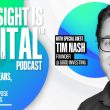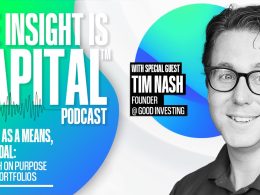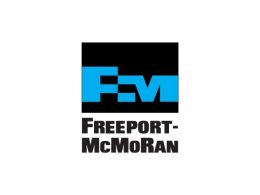The Market’s Hitting Records. The Outlook? Still a Mess.
Markets may be pushing all-time highs, but don’t let that fool you—there’s a whole lot of noise under the surface. At AGF’s 2025 Midyear Update1, the message from the firm’s top minds wasn’t exactly one of clarity. If anything, it was this: get ready to expect the unexpected.
“Some level of heightened volatility seems inevitable,” says Bill DeRoche, AGF’s Head of Quantitative Investing. Still, in a twist that only 2025 could deliver, he adds: “It wouldn’t surprise me if [markets] rally even higher from here.”
So what’s driving the market—and what could break it? Here’s how AGF’s Office of the CIO sees the second half shaping up.
Trump, Tariffs, and the TACO Trade
Let’s start with the biggest wildcard of the year: trade policy. The Trump administration’s sweeping tariffs have dominated headlines, and investors are still trying to figure out whether they’re a real threat—or just more political theatre.
“I believe U.S. President Trump’s hands are somewhat tied when it comes to tariffs,” says DeRoche, pointing to political resistance to both inflation and recession. But he doesn’t sound entirely convinced things would calm down, either. “That kind of reasoning hasn’t stopped Trump from continuing to warn numerous countries… with much higher levies than the 10% baseline.”
Enter the “TACO” theory—Trump Always Chickens Out. As DeRoche puts it, “It wouldn’t surprise me if they continue to be influenced by the idea that Trump Always Chickens Out (TACO) and rally even higher from here.”
David Stonehouse, Head of North American and Specialty Investments, issn’t betting on a quick resolution: “It’s likely to be months before actual i’s are dotted and t’s are crossed.”
John Christofilos chimes in with a sharper take on the process: “It’s also evident to me that ‘manage by delay’ is an active strategy being applied by many countries around the world.”
Rune Sollihaug doesn’t sugarcoat it either: “Volatility… is not likely going away.” Investors, he says, should “prepare for further ebbs and flows brought on by tariff uncertainty.”
Even if things settle down, Stonehouse warns that we’re already in uncharted territory: “Even if you believe a 10% U.S. tariff is the most likely outcome… that still represents the highest level they’ve been since the Great Depression.”
Could Stagflation Be Around the Corner?
One of the darker scenarios being discussed: stagflation. That’s when growth slows while prices rise—a nasty combo for any economy.
“That would almost certainly increase volatility and uncertainty in financial markets… and only fuel the possibility of a stagflation-like environment… whereby growth slows and inflation rises,” warns Stephen Way, Head of Global Equity.
“If stagflation is on the table,” adds DeRoche, “that’s the worst-case scenario.”
Stonehouse is a bit more optimistic. “I’m not sure that dynamic is long lasting,” he says, citing housing disinflation via Owners’ Equivalent Rent and Trump’s proposed mega-stimulus, the “One Big Beautiful Bill,” as potential offsets.
Geopolitics: Oil, Taiwan, and the Unknown
If tariffs don’t get us, geopolitics might. Sollihaug points to the simmering Middle East conflict: “Most worrisome to me would be another flare-up in the conflict that Israel and the U.S. have with Iran.”
And if that happens? Way says, “If a barrel ends up going above US$100 because of an escalation, that will have a broad impact on the economy.”
Still, Stonehouse tries to ease the tension: “I believe the worst of this conflict is over… [and] it’s not likely to affect the straw that ultimately stirs the global equity drink, meaning the U.S. economy.”
Yet tensions with China are lurking too. Way notes that “Trump’s tariff policy… could chill relations between China and the U.S.”—especially around sensitive sectors like chips and pharma.
And then there’s Taiwan. Stonehouse calls it the “ultimate geopolitical risk lurking in the background.”
The Fed’s Crossfire and the Fiscal Floodgates
Of course, no 2025 market outlook would be complete without a debate about the Fed.
Stonehouse thinks the U.S. central bank will blink: “I believe [the Fed] will cut its key lending rate at least once, but maybe more by the end of the year.”
But Trump’s constant attacks on Fed independence could cloud that path. “He clearly wants lower rates… his constant berating of Fed Chair Powell… is something to consider,” says DeRoche.
That said, Stonehouse doesn’t believe Powell is going anywhere: “I don’t think Trump can drum Powell out. He doesn’t have the authority.”
Still, the political pressure might be messing with monetary policy. “It could look like he capitulated,” Stonehouse adds. “Indeed, Trump might get what he wants more easily if he just keeps his mouth shut.”
Way, meanwhile, thinks the cuts won’t be dramatic: “If we avoid a recession, I don’t think we’re getting massive cuts.”
Stonehouse warns about a potential unintended consequence: “If you start cutting aggressively… it could result in higher debt costs… there go your borrowing costs.”
Outside the U.S., things are shifting too. Stonehouse says “The European Central Bank may have room to cut more,” and Way flags Japan’s possible rate hike.
In Canada, fiscal stimulus from new Prime Minister Mark Carney is giving the Bank of Canada room to pause. “The combination of fiscal stimulus and more interprovincial trade could allow the Bank of Canada to pause for a while,” Stonehouse says.
Where to Invest Now
What does all this mean for portfolios?
“A strong end to 2025 is possible,” says Christofilos, “if the threat of tariffs subsides… and more emphasis is paid to some of the potential catalysts… including U.S. deregulation and tax cuts, as well as an interest rate cut.”
Way is leaning global. “My bias is to be overweight equity markets outside the United States… I’m constructive on emerging markets… Europe remains attractive… [and] we are constructive on Japan.”
He cites Japan’s supportive macro environment: “Monetary policy remains stimulative… the Japanese yen also remains very cheap… and ongoing corporate reform should provide another supporting factor.”
Back home, Canada may be riding momentum. Way quotes AGF’s Mike Archibald: “The S&P/TSX Composite Index’s outperformance… is being fueled by earnings revisions… and the new Carney government… appears to be very pro-business and adept at negotiating with U.S. President Trump.”
Despite the rally, DeRoche isn’t calling a top: “Our modelling doesn’t suggest the U.S. market is overvalued but there may not be a lot of room for further gains.”
Stonehouse adds nuance: “Credit seems fairly valued now… sovereign bonds may not be as attractive… equities rally.”
As for gold? “It still looks well positioned… given global fiscal challenges,” he says, but short-term upside might be limited.
In the End: Noisy, But Not Broken
If you’re looking for clean narratives and simple answers, 2025 isn’t going to give them to you. But for investors willing to tune out the noise and focus on fundamentals, there’s still opportunity—just not without turbulence.
Markets may be loud and unclear. But they’re not uninvestable.
1 AGF Investments. Rune Sollihaug. David Stonehouse. John Christofilos, Bill DeRoche. "Mid-Year Outlook 2025." 30 July, 2025,
- 1 ↩︎















